America at Its Best: The John Heinz Institute of Rehabilitation
Written by Tony Mussari, Sr.
Edited by Kitch Loftus-Mussari
Copyright 2017
Mussari-Loftus Associates
The Face of America Project
Work and live to serve others, to leave the world a little better than you found it and garner for yourself as much peace of mind as you can. This is happiness. David Sarnoff
Actions, Attitudes and Words Matter
When we give cheerfully and accept gratefully, everyone is blessed.Maya Angelou
In 2010, my wife and I began our Face of America project. In phase one, we traveled the length and breadth of the continental United States searching for examples of the Face of America on its best day. We drove more than 30,000 miles. We recorded more than 110 hours of video footage. We took 57,000 digital pictures, and we interviewed 400 people all in the span of about 100 days. During the years that followed, we continued our search for examples of America At Its Best.
continental United States searching for examples of the Face of America on its best day. We drove more than 30,000 miles. We recorded more than 110 hours of video footage. We took 57,000 digital pictures, and we interviewed 400 people all in the span of about 100 days. During the years that followed, we continued our search for examples of America At Its Best.
In our opinion, the Face of America belongs to people who give service to others by doing acts of kindness that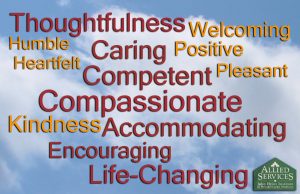 give people hope and a belief that tomorrow can and will be better than today.
give people hope and a belief that tomorrow can and will be better than today.
The face of America belongs to people who want to give something of themselves to their country, their community and their world, people who never let adversity define who they are.
As we approach the seventh anniversary of our final project, we found a classic example of America At Its Best at the John Heinz Institute of Rehabilitation just 11 miles from our home.
This word cloud is our attempt to capture the spirit of this very special place and the people who work there.
Thoughtfulness
The classic definition of thoughtfulness is showing consideration for the needs of others.
Thoughtfulness is the hallmark of every person who works  at the John Heinz Institute in Wilkes-Barre, PA. Every day, the therapists and members of the staff work with people who are experiencing great challenges. They become a bridge of hope for the patients they serve, their caregivers and family members. That bridge is deeply rooted in thoughtfulness.
at the John Heinz Institute in Wilkes-Barre, PA. Every day, the therapists and members of the staff work with people who are experiencing great challenges. They become a bridge of hope for the patients they serve, their caregivers and family members. That bridge is deeply rooted in thoughtfulness.
An Irish proverb best describes the thoughtfulness one discovers at the John Heinz Institute:
It is in the shelter of each other that people live.
Caring
Never believe that a few caring people can’t change the world. For, indeed, that’s all who ever have. Margaret Mead
My wife and I have been in the medical system for several years. We have experienced the challenges that come with a diagnosis heart disease and breast cancer. Recently, I was diagnosed with Parkinson’s disease. All three of these health problems have reinforced a basic fact of life. Before you can completely heal the patient, your actions and words must convince them that you care about them and their situation.
experienced the challenges that come with a diagnosis heart disease and breast cancer. Recently, I was diagnosed with Parkinson’s disease. All three of these health problems have reinforced a basic fact of life. Before you can completely heal the patient, your actions and words must convince them that you care about them and their situation.
An adaptation of the words of the celebrated author and teacher Leo Buscaglia will accurately put this quality in focus:
At the John Heinz Institute they never underestimate the power of a touch, a smile, a kind word, a listening ear, an honest compliment, or the smallest act of caring, because they know all of these qualities have the potential to turn a life around.
Competence
There is no substitute for competence. Ayn Rand
Competence is the ability to do something well.
Mark Twain added an important refinement when he wrote these famous  words about competence in his Notebook:
words about competence in his Notebook:
Obscurity and a competence-that is the life that is best worth living.
These thirteen words written by an American genius were designed to highlight two important points. It’s not about fame. It’s about doing your best.
The people who offer their services at the John Heinz Institute are not interested in acclaim. They are interested in positive outcomes for their patients.
Thank you, Flo Kohar for conducting the Video Swallow Test in a competent and caring way.
Compassion
The purpose of human life is to serve, and to show compassion and the will to help others. Albert Schweitzer
Researchers at the Greater Good Science Center at the University of  California, Berkeley define compassion as “suffering together.” Compassionate people identify with the suffering of others. They actually feel the pain of the person who is struggling with a medical challenge.
California, Berkeley define compassion as “suffering together.” Compassionate people identify with the suffering of others. They actually feel the pain of the person who is struggling with a medical challenge.
During his tenure, the Chief Executive Officer of the Stony Brook University Hospital in New York, Dr. Steven L. Strongwater, made it very clear that compassionate care is integral to the art of healing.
Toward this end:
Patients and family members are treated with respect;
Healthcare providers communicate and share complete and unbiased information with patients and families in ways that support them and are useful;
Patients and families are encouraged and supported in participating in care and decision-making at the level they choose;
Collaboration among patients, family members, and providers occurs in policy and program development and professional education, as well as the delivery of care.
When it comes to sensitive, warm, loving care, the therapists at the John Heinz Institute meet the Strongwater standard as described by Thomas Merton:
The whole idea of compassion is based on a keen awareness of the interdependence of all these living beings, which are all part of one another, and all involved in one another.
Accommodating
…accommodation is a gratifying choice. Sylvia Boorstein
Accommodating people are eager to help someone with a problem. They do it in a friendly way.
Salvador Minuchin is a respected family therapist. He called accommodation  one of the silent songs of life without which life is impossible. Sylvia Boorstein teaches at Spirit Rock Meditation Center in Woodacre, California. She believes that accommodation is a gratifying choice.
one of the silent songs of life without which life is impossible. Sylvia Boorstein teaches at Spirit Rock Meditation Center in Woodacre, California. She believes that accommodation is a gratifying choice.
According to Dr. Minuchin, the the road to accommodation is paved with tolerance, support, and flexibility. These are fundamental family values. It should come as no surprise that all the members of the John Heinz family go out of their way to accommodate the patients, family members and caregivers who depend upon the services and programs offered at the center.
Thank You, Theresa Yaron for all that you do to accommodate the needs of patients.
Encouraging
Difficult roads often lead to beautiful destinations. Author Unknown
When I think about encouragement, the image that always comes to mind is the iconic World War II image of Rosie the Riveter flexing
the iconic World War II image of Rosie the Riveter flexing  her muscles under the slogan “We can do it.” It’s all there.
her muscles under the slogan “We can do it.” It’s all there.
Epictetus, an ancient philosopher and author of The Art of Living, gave us the essence of encouragement in one sentence:
The key is to keep company only with people who uplift you, whose presence calls forth your best.
He provided an accurate description of the encouraging people who work at the Heinz Institute when he advised his readers with this profound statement:
Don’t explain your philosophy. Embody it.
Life-Changing
I am not what happened to me, I am what I choose to become. C.G. Jung
The founder of analytical psychology also gave us this insight:

The meeting of two personalities is like the contact of two chemical substances: if there is any reaction, both are transformed.
Just being in the Heinz Rehabilitation Center is a transformational experience. In my two months of rehab, I have met more heroines and heroes than I have seen in a lifetime. They are young and old, rich and poor. They represent a variety of ethnic and racial backgrounds, but they all have one thing in common. They have hope that they can improve their circumstance.
Working with their therapist, they are determined to give their best effort to overcome the challenges they face. They want to walk again, speak again, and work again. They want to have a normal life again.
There is genuine sense of community in this life-changing place.
Humble
True humility is not thinking less of yourself; it is thinking of yourself less. C.S. Lewis
On September 20, 2013, my wife and I attended a Town Hall Forum at the Medal of Honor Convention in Gettysburg. We were there to produce a documentary about the convention. Approximately 300 attended the Town Hall Forum, and one of the most memorable moments happened when Medal of Honor recipient Sal Giunta was asked why he did what he did and what was going through his mind when he did it.
about the convention. Approximately 300 attended the Town Hall Forum, and one of the most memorable moments happened when Medal of Honor recipient Sal Giunta was asked why he did what he did and what was going through his mind when he did it.
Giunta surprised everyone in the room with his answer.
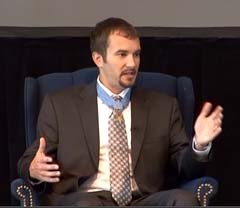
I did what I did because everyone else was doing the same thing. There’s no room or time to think about you, because you don’t matter. We matter, and it has nothing to do with you as an individual. I never once led. I always stood side by side to my brothers. My first thought was to my boys….
I will never forget that moment and those words. In my mind, they constitute one of the best definitions of selfless humility and service I have ever heard.
Fast forward three years and two months, and I am watching Sal Giunta’s words play out in a totally different setting. There are no video production crews or journalists. There is room filled with therapists and their patients. Every one of them was doing the same thing. They were standing side by side with their patients, offering encouragement and hope. Their first thought and all the thoughts that followed were about helping their patients.
In the 19th century, Robert Louis Stevenson, gave an excellent insight into the importance of humility:
There are two things that men should never weary of, goodness and humility; we get none too much of them in this rough world among cold, proud people…
If you want to find powerful examples of goodness and humility visit the John Heinz Rehabilitation Center. There are no cold, proud people there.
Heartfelt
The heart is happiest when it beats for others. Author Unknown
A heartfelt person is a sincere person.
John O’Donohue believes that a loving heart awakens the spirit to  possibilities and engagement with others.
possibilities and engagement with others.
That’s the spirit I experience every time I enter the John Heinz Institute. To be honest, I try to arrive 15 minutes early for my appointment so I can sit in the waiting area and experience the heartfelt engagement between the patients and their therapists. It is polite, earnest and professional.
Positive
The optimists…tend to believe that defeat is just a temporary setback or a challenge, that its causes are just confined to this one case. Dr. Martin Seligman
Dr. Martin Seligman is the father of Positive Psychology He believes that a pleasant manner is the first step on the road to success. He is founder of the Positive Psychology Center at the University of Pennsylvania. His research uncovered five elements for a happy life: Positive Emotion, Engagement, Positive Relationships, Meaning and Accomplishment /Achievement.
that a pleasant manner is the first step on the road to success. He is founder of the Positive Psychology Center at the University of Pennsylvania. His research uncovered five elements for a happy life: Positive Emotion, Engagement, Positive Relationships, Meaning and Accomplishment /Achievement.
I can honestly say that I experience all of the elements of Dr. Seligman’s PERMA model at the John Heinz Rehabilitation Center.
An adaptation of Dr. Seligman’s words applies to all the therapists at the Heinz Institute and in particular my speech therapist, Joanne Orlando:
They use their strengths and virtues in the service of something much larger than who they are.
Welcoming
Great men show politeness in a particular way; a smile  suffices to assure you that you are welcome…as if you were a member of the family. John James Audubon
suffices to assure you that you are welcome…as if you were a member of the family. John James Audubon
Thank you, Mark Miller for making the effort to welcome in a polite and friendly way every patient and family member who visits the John Heinz Institute in Wilkes-Barre. Your kind words and actions make the rehabilitation center something that I look forward to every week.
Kindness
Kind actions begin with kind thoughts. Author Unknown
Kindness is a human value that is action-oriented. A kind person wants to help people who are suffering.
Dr. Stephen G. Post is a professor of Preventative Medicine at 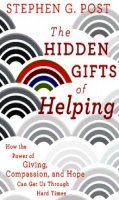 Stony Brook University. He is the director of the Center for Medical Humanities, Compassionate Care and Bioethics. He is the author of Why Good Things Happen To Good People and The Hidden Gifts of Helping.
Stony Brook University. He is the director of the Center for Medical Humanities, Compassionate Care and Bioethics. He is the author of Why Good Things Happen To Good People and The Hidden Gifts of Helping.
When he was asked to provide characteristics that are central to America on its best day, Dr. Post was quick to respond with six qualities: gratitude, hope, joy, compassion, generosity and loving kindness, a concept that is deeply rooted in the Mussar tradition.
I believe the spirit of kindness permeates everything that happens at the Heinz Institute. All of the members of the staff want to help the patients they encounter.
My speech therapist, Joanne Orlando, is always looking for ways to resolve my problem. She reflects the light and the spirit of kindness.
When Mark Twain wrote these words, he provided a great insight into this life-changing value:
Kindness is the language which the deaf can hear and the blind can see.
Pleasant
Garner up pleasant thoughts in your mind, for pleasant thoughts make pleasant lives. John Wilkins, 17th century English clergyman
Thank you, Nicole Pelosi for your warm and friendly greetings when you  pass me in the waiting area. Your engaging smile lifts my spirits every time you ask, “How are you doing today?”
pass me in the waiting area. Your engaging smile lifts my spirits every time you ask, “How are you doing today?”
If I were an artist painting a portrait of the people who staff the John Heinz Rehabilitation Institute, their faces would radiate vivid images of hope, love, joy, faith, courage, creativity, community, and nobility of purpose.
Mark Miller
Theresa Yaron
Joanne Orlando
Flo Kohar
Nicole Pelosi
Thank you to all the men and women who work at the John Heinz Institute of Rehabilitation.
You are America at its very best.
The picture of Rosie the Riveter is part
of the collection at the National Museum
of American History in Washington, D.C.
Please provide feedback to:
tony.mussari@gmail.com
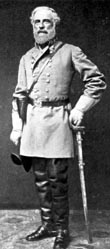 July 1, 1863, when General Robert E. Lee led his Army of Northern Virginia into town and set up camp.
July 1, 1863, when General Robert E. Lee led his Army of Northern Virginia into town and set up camp.
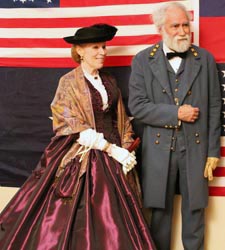 have seen in historical photographs. Mrs. Lee wears a dress similar to the ones we remember from “Gone With The Wind:” six layers of clothing covered by a magnificent silk moire dress, ear bobs, hair caught up in a net topped by an elegant hat carrying a parasol or a cane.
have seen in historical photographs. Mrs. Lee wears a dress similar to the ones we remember from “Gone With The Wind:” six layers of clothing covered by a magnificent silk moire dress, ear bobs, hair caught up in a net topped by an elegant hat carrying a parasol or a cane.
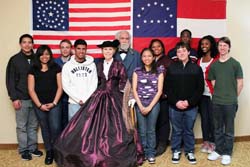 our production crew can give testimony to the many important lessons they teach when given the opportunity to recount the wit, wisdom and insight of the General and his lady.
our production crew can give testimony to the many important lessons they teach when given the opportunity to recount the wit, wisdom and insight of the General and his lady.
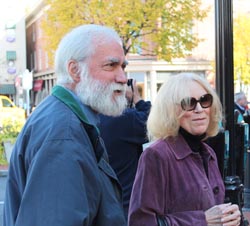 encouraged us and they helped us navigate the bumps in the road during our journey to the screening and the banquet.
encouraged us and they helped us navigate the bumps in the road during our journey to the screening and the banquet.